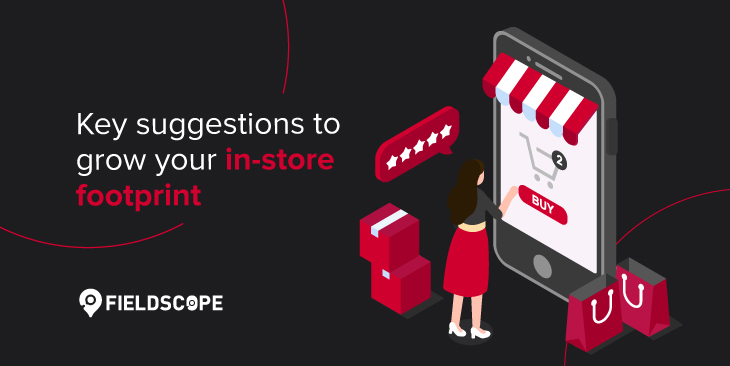Proper use of data strengthens the presence of field sales teams in stores and improves shelf sales performance. If you want your promotions and campaigns to be effective and profitable, you must first collect high-quality data.
What kind of data do salespeople need to prioritize and maximize high-opportunity initiatives for store and POP sales? It may make sense to mention three primary data types here.
First, data about the activities that sales teams perform in the field—in this case, at the sales points—is essential. We can see many metrics such as store visit frequency, regional store coverage percentage, time spent by salespeople in stores under the activity data.
The second group is observational data. Data such as store status, promotions applied, current stock level, shelf arrangements may require sales managers and teams to be involved in the field to implement new sales regulations.
Undoubtedly, data on direct sales also constitutes the most effective set. We are talking about data that directly reflect performance, such as sales by product and sales relative to other customers in the region.
These three types of data provide sales and marketing teams with a complete picture of how the products they market are presented, sold, and supported by all customers. It also sheds light on how brands must position their field teams to achieve success.
With the proper use of data, field teams can strengthen their presence in stores, improve the performance of shelf sales, and ensure that brand promotions are effective and profitable.
Strengthen your presence in stores
Your salespeople introduce store owners to good products and even get good sales to increase the trust in your salespeople. However, this trust must be sustainable. Detailed data on the display of the winning products and the status of the products on the shelves allow you to take measures to increase store sales.
For example, numerically demonstrating to store managers that your sales representatives regularly conduct inspections and display maintenance assures the store managers that the store display will continue in the future.
Tracking how much time each rep spends in a single store visit and comparing this information to sales quality in the same store helps sales managers give agents better feedback on where and how much time they should spend.
Data on track which route agents take between stores can eliminate store coverage problems in the region. However, it may be necessary to optimize the route overtime to ensure full access to the stores.
An example of using event data is knowing how consistently the agent collects store data. This effort allows sales managers to obtain detailed information about the merchandise they need more information on. Thus, sales managers can create a consistent and well-organized list of priority stores.
Brands use event data when making sales and distribution plans for many stores in a region or understanding the actual state of region coverage.
To shine the displays
Forward-thinking brands need a clear picture of exactly what their presence in each store is to improve sales in a chain or region rapidly. Combining store photos, structured data, and notes from sales reps allows managers to paint a different picture of what’s going on in each store.
The customer representatives took notes regarding the POP installations or shelf placements in the store. The observations they collect provide information not only to the brands but also to the store owners about the facts that negatively or positively affect sales. For example, anything like a poorly organized display or a non-renovated shelf, an out-of-promotional POP arrangement can negatively impact sales.
Gathering information about the position of competitor products on store shelves informs sales representatives about where promotional materials should be placed. This data also helps sales managers develop an overall shelf strategy.
Recording data from store-to-store shelf location of products and comparing that information to sales data shows salespeople where their products sell the most and what shelf space they need to fight for.
Taking note of the store situation is also separate observational data. Almost everything from the shelf with the product lines to the condition of the floor in front of the shelf helps managers understand which stores need more maintenance and which stores are in good condition.
What do sales say?
Proper management of product categories and a good understanding of which products work well together have helped many emerging brands achieve success. In addition, evaluating sales data for products for which cross-selling helps brands better determine where to sell complementary products.
Or vice versa. When sales of an existing product start to decline after introducing a new product, representatives should know this, and managers should act quickly on this sales data. Many of the fast-growing brands worldwide can provide POS data to their field representatives from the stores they sell to. With this data, sales representatives can better explain to store owners why their products should be on store shelves.
The absence or reduction of a product you sell in-store stocks can mean many things. This data can even tell you that the brand you are marketing is about to lose that customer. Therefore, robust analysis of stock data is the most crucial assistant in sales. In addition, with much data on sales trends in the store, robust initial sales data can motivate store owners to make better placements and increase demand for new products. Sales data is an opportunity.

